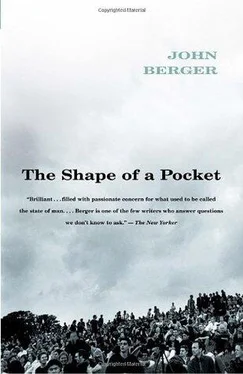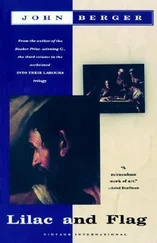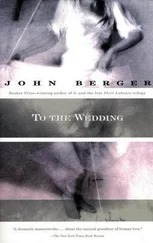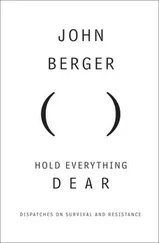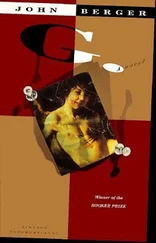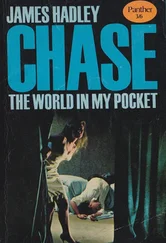The painting is not of course declaring these men to be ‘clods of earth’, the term used by many citizens at that epoch to insult peasants. The fusion of the figures with the ground refers fiercely to the reciprocal exchange of energy that constitutes agriculture, and which explains, in the long term, why agricultural production cannot be submitted to purely economic law. It may also refer — by way of his own love and respect for peasants — to his own practice as a painter.
During his whole short life he had to live and gamble with the risk of self-loss. The wager is visible in all the self-portraits. He looks at himself as a stranger, or as something he has stumbled upon. His portraits of others are more personal, their focus more close-up. When things went too far, and he lost himself utterly, the consequences, as the legend reminds us, were catastrophic. And this is evident too in the paintings and drawings he made at such moments. Fusion became fission. Everything crossed everything else out.
When he won his wager — which was most of the time — the lack of contours around his identity allowed him to be extraordinarily open, allowed him to become permeated by what he was looking at. Or is that wrong? Maybe the lack of contours allowed him to lend himself, to leave and enter and permeate the other. Perhaps both processes occurred — once again as in love.
Words. Words. Return to the drawing by the olive trees. The ruined abbey is, I think, behind us. It is a sinister place — or would be if it were not in ruins. The sun, the Mistral, lizards, cicadas, the occasional hoopoe bird, are still cleaning its walls (it was dismantled during the French Revolution), still obliterating the trivia of its one-time power and insisting upon the immediate.
As he sits with his back to the monastery looking at the trees, the olive grove seems to close the gap and to press itself against him. He recognises the sensation — he has often experienced it, indoors, outdoors, in the Borinage, in Paris or here in Provence. To this pressing — which was perhaps the only sustained intimate love he knew in his lifetime — he responds with incredible speed and the utmost attention. Everything his eye sees, he fingers. And the light falls on the touches on the vellum paper just as it falls on the pebbles at his feet — on one of which (on the paper) he will write Vincent.
Within the drawing today there seems to be what I have to call a gratitude, which is hard to name. Is it the place’s, his or ours?
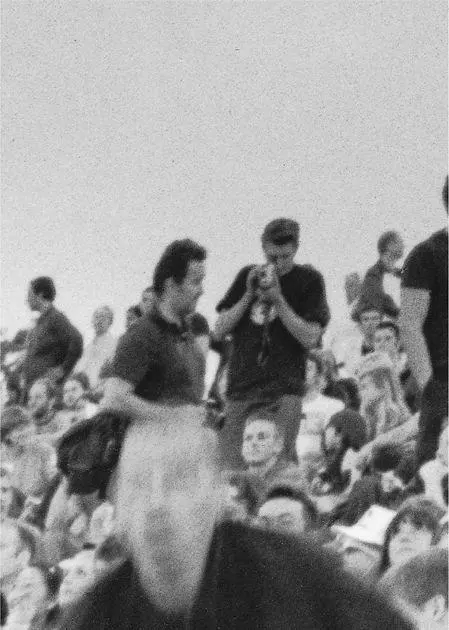
I am craning my neck to look up at the Sistine Chapel ceiling and the Creation of Adam — do you think, like me, that once you dreamt the touch of that hand and the extraordinary moment of withdrawal? And pfff! I picture you in your faraway Galician kitchen restoring a painted Madonna for a small village church. Yes, the restoration here in Rome has been well done. The protests were wrong, and I can tell you why.
The four kinds of space Michelangelo played with on the ceiling — the space of bas-relief, the space of high-relief, the corporeal space of the twenty nudes whom he dreamt as a beatitude as he lay painting on his back, and the infinite space of the heavens — these distinct spaces are now clearer and more astonishingly articulated than they were before. Articulated, Marisa, with the aplomb of a master snooker player! And if the ceiling had been badly cleaned, this would have been the first thing lost.
I’ve discovered something else too: it leaps to the eye but no one quite faces up to it. Perhaps because the Vatican is so formally imposing. Between its worldly wealth on one hand, and its list of eternal punishments on the other, the visitor is made to feel exceedingly small. The excessive riches of the Church and the excessive punishments the Church prescribed were really complementary. Without Hell, the wealth would have appeared as Theft! Anyway, visitors today from all over the world are so awed they forget about their little things.
But not Michelangelo. He painted them, and he painted them with such love they became focal points, so that for centuries after his death, the Papal authorities had one male sex after another in the Sistine Chapel covertly scratched out or painted over. Happily there are still quite a few that remain.
During his lifetime he was referred to as ‘the sublime genius’. Even more than Titian he assumed — at the very last possible historical moment — the Renaissance role of the artist as supreme creator. His exclusive subject was the human body, and for him that body’s sublimity lay revealed in the male sexual organ.
In Donatello’s David the young man’s sex is discreetly in its proper place — like a thumb or a toe. In Michelangelo’s David the sex is the body’s centre and every other part of the body refers back to it with a kind of deference, as if to a miracle. As simple and as beautiful as that. Less spectacularly, but none the less evidently, the same is true of his Bruges Madonna and the sex of the infant Christ. It was not lust but a form of worship.
Given this predilection and all the pride of the Renaissance genius, what would you say his imaginary paradise might have been? Might it not have been the fantasy of men giving birth?
The whole ceiling is really about Creation and for him, in the last coil of his longing, Creation meant everything imaginable being born, thrusting and flying, from between men’s legs!
Remember the Medici tomb with the figures of Night and Day, Dusk and Dawn? Two reclining men and two reclining women. The women modestly fold their legs together. Both men part their legs and, pushing, lift their pelvises, as though waiting for a birth. Not a birth of flesh and blood and not — heaven forbid — of symbols either. The birth they await is of the indescribable and endless mystery which their bodies incarnate, and which will emerge from there, from between their parted legs.
And so it is on the ceiling. The visitors in the Chapel floor are like figures who have just dropped from between the feet and out of the skirts of the Prophets and Sibyls. OK The Sibyls are women, but not really, not when you get close: they are men in drag.
Beyond, are the nine scenes of the Creation and there, at the four corners of each scene, sit the amazing, twisting, immense, labouring male nudes (the ignudi) , whose presence commentators have found so difficult to explain. They represent, some claim, Ideal Beauty. Then why their effort, why their longing and their labour? No, the twenty young naked men up there have conceived and just given birth to all that is visible and all that is imaginable and all that we see on the ceiling. Man’s loved body up there is the measure of everything — even of platonic love, even of Eve, even of you.
He once said, talking about the sculptor of the Bevedere Torso (50 BC): ‘This is the work of a man who knew more than nature!’
And therein lay the dream, the coiled desire, the pathos and the illusion.
In 1536, two decades after he finished the ceiling, he started to paint the Last Judgement on the gigantic wall behind the altar. Maybe it’s the biggest fresco in Europe? Countless figures, all naked, mostly men. Other writers have compared it with the late works of Rembrandt or Beethoven but I can’t follow them. What I see is pure terror and the terror is intimately connected with the ceiling above. Man on this wall is still naked but now the measure of nothing!
Everything has changed. The Renaissance and its spirit is finished. Rome has been sacked. The Inquisition is about to be set up. Everywhere fear has replaced hope, and he is growing old. Maybe it’s like our world today.
Читать дальше
